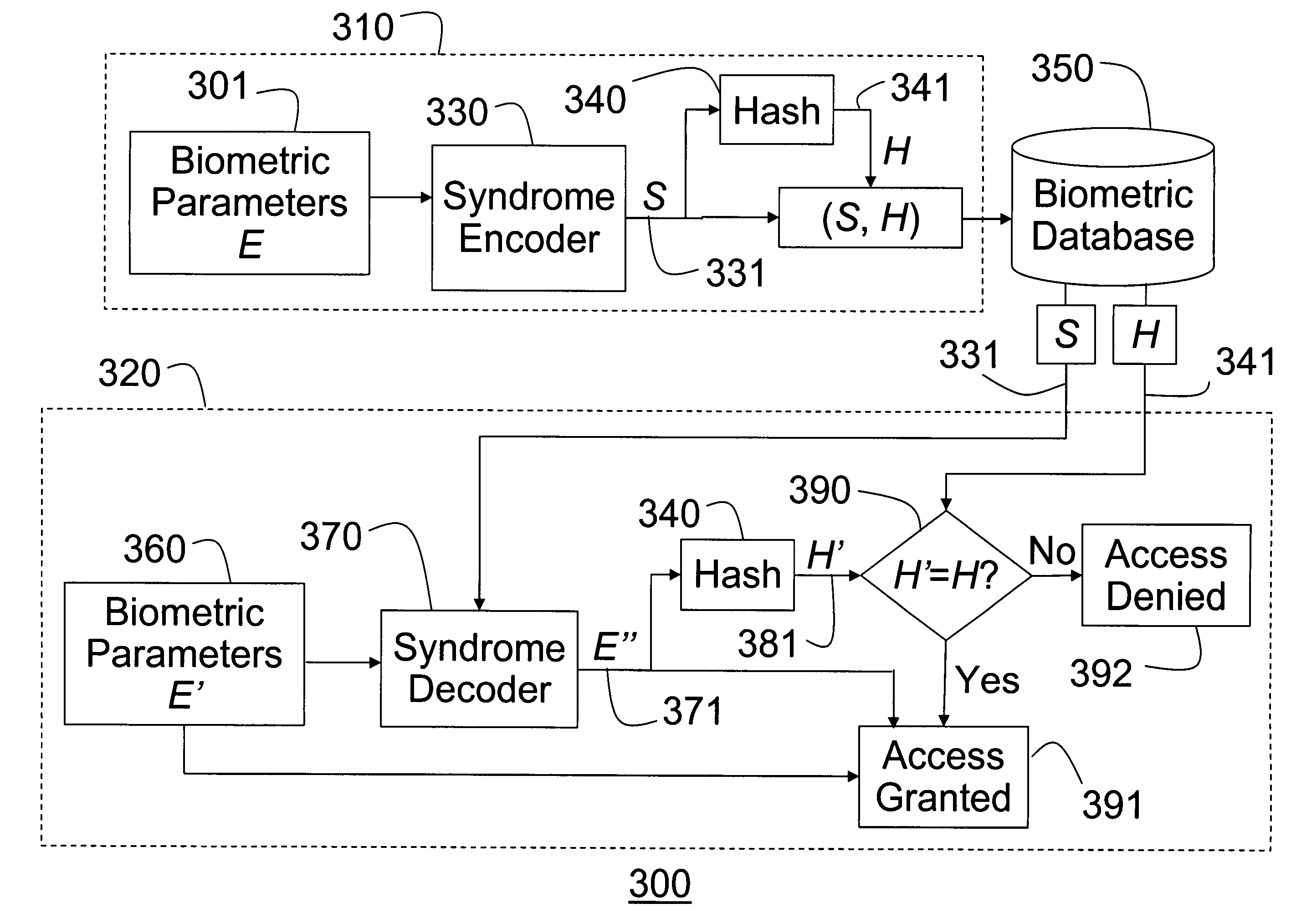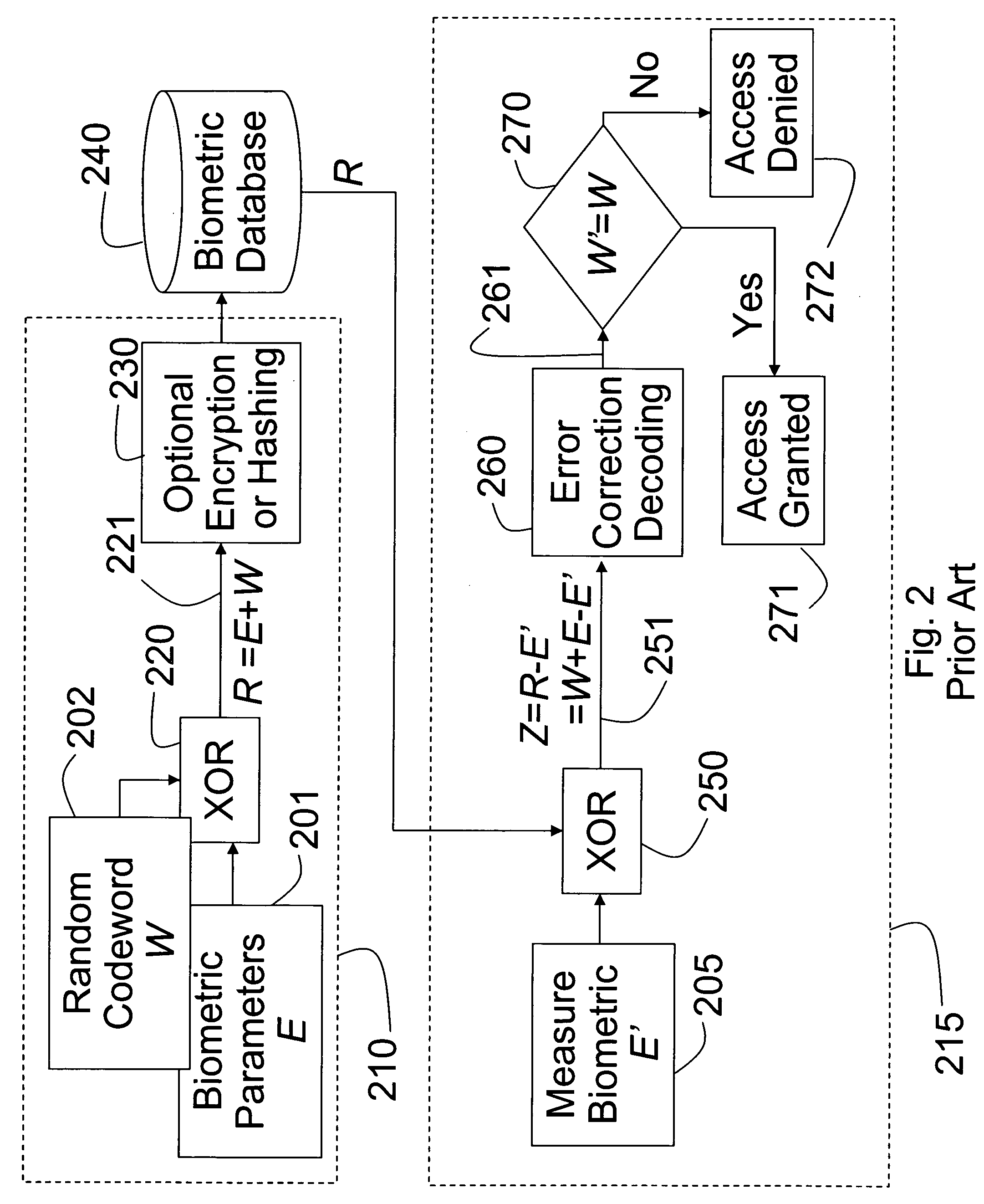Biometric based user authentication and data encryption
a biometric and user authentication technology, applied in the field of cryptography, can solve the problems of being subject to “break once, run everywhere”, and achieve the effect of little use in circumventing the security of the system
- Summary
- Abstract
- Description
- Claims
- Application Information
AI Technical Summary
Benefits of technology
Problems solved by technology
Method used
Image
Examples
Embodiment Construction
[0055] Embodiments of our invention include the following components: a syndrome encoder and hashing method for securely storing biometric parameters, a syndrome code based encryption method for securely storing data encrypted with biometric keys, and a method of optimizing syndrome codes used for secure biometric applications such as the former two methods. We describe each method in a separate subsection.
[0056] A Syndrome and Hashing Method for Secure Biometric Parameters
[0057]FIG. 3 shows a syndrome and hashing based biometric security system 300 according to our invention. The method according to our invention compresses measured biometric parameters with a syndrome code to produce a compressed syndrome code. Unlike conventional compression, the syndrome code produced by the syndrome code bears no relationship to the original biometric data. Therefore, the stored syndrome code cannot be used to decode an approximation of the original biometric parameters. The resulting compres...
PUM
 Login to View More
Login to View More Abstract
Description
Claims
Application Information
 Login to View More
Login to View More - R&D
- Intellectual Property
- Life Sciences
- Materials
- Tech Scout
- Unparalleled Data Quality
- Higher Quality Content
- 60% Fewer Hallucinations
Browse by: Latest US Patents, China's latest patents, Technical Efficacy Thesaurus, Application Domain, Technology Topic, Popular Technical Reports.
© 2025 PatSnap. All rights reserved.Legal|Privacy policy|Modern Slavery Act Transparency Statement|Sitemap|About US| Contact US: help@patsnap.com



